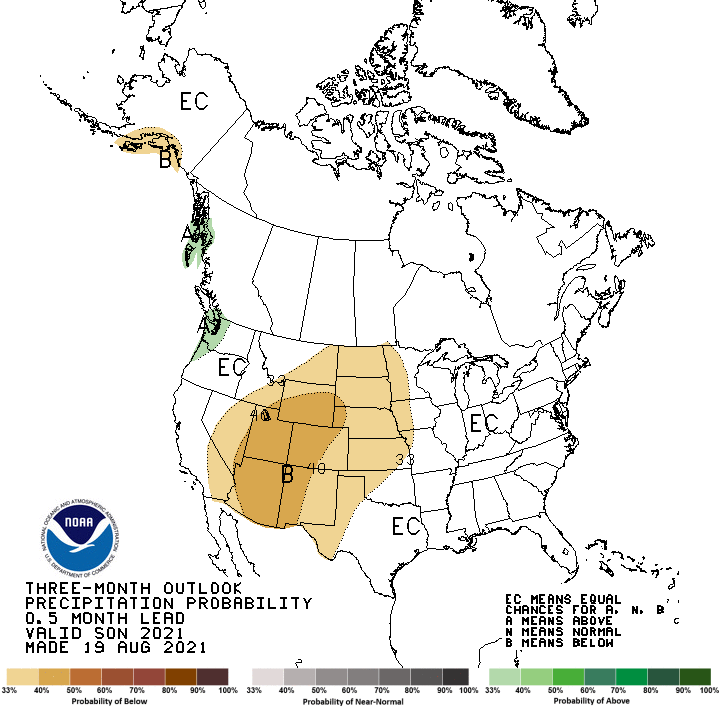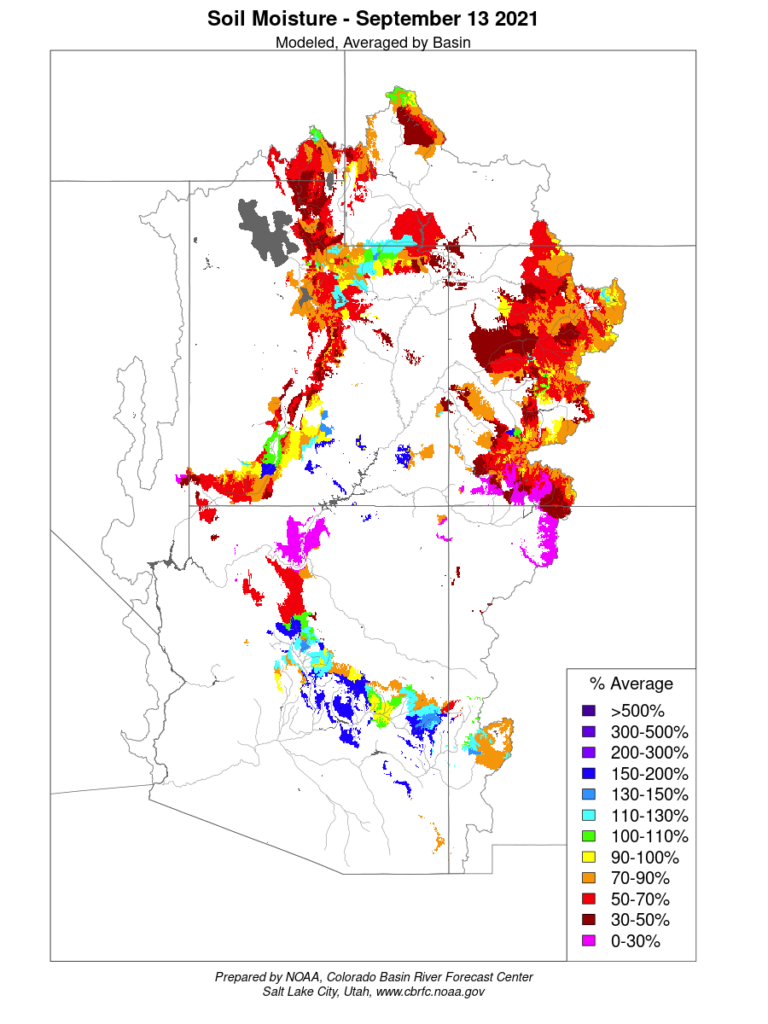
odds favor a dry autumn 2021 in the watersheds that matter to me
Getting ready for class class discussion this afternoon about “drought” (“I get to see my students in person!” he exclaimed nervously.), I had occasion to check the latest Climate Prediction Center long lead forecast. It’s a few weeks old, but I don’t expect it’ll have changed much.
The brownest blob captures both river basins I care most about – the Rio Grande and Colorado, with odds tilted toward drier than average conditions through November. (And it doesn’t get any better if you look at the longer leads.)
Today’s class teaching goal: there’s no one thing called “drought”, it has many different definitions depending on who and where you are. For me, the most important measure is soil moisture (now) and snowpack (over the coming winter). Those are the things that determine available water supply for the communities of interest to me. There’s some overlap between my “drought” and a forest’s, or a fish’s, but they’re not necessarily the same thing. (If any of my students are listening in here, that’s a clue to the “what did Prof. Fleck leave out of the recorded lectures” discussion question.)
After some time last week in the mountains of northern New Mexico and southern Colorado, where Albuquerque gets its water, I had occasion to pull the latest soil moisture modeling from the Colorado Basin River Forecast Center. CBRFC only does the Colorado River Basin side of the continental divide, but there’s no reason to think it’s any different on our side of that line.
I cringed:

Dry soil moisture heading into fall 2021 in the Colorado River Basin

the comparison between this year and last year at this time would be interesting.
I appreciate your posts, John! I live in the SE corner of Arizona, in Bisbee, and I’ve noticed one thing the maps neglect to show is that much of Cochise County, AZ, isn’t in the Colorado River Basin. My area drains into the Yaqui River in Sonora. Nevertheless this region is affected by the same long-term climate changes and weather patterns as yours.
John
For me this is meaningless. If it percent averageit is meaningless because the average in not given? To be meaningfull it should be volume percent moisture in absolute terms I have meaured thousands of soil profiles using my Troxler neutron probe. Results are in volume percent. In agricultural work we look for the wilting point which is usually below 12 to 20 volume percent by weight of water.
where:
volumetric water content (%) = quotient of volume of water in soil {divided by} volume of soil specimen